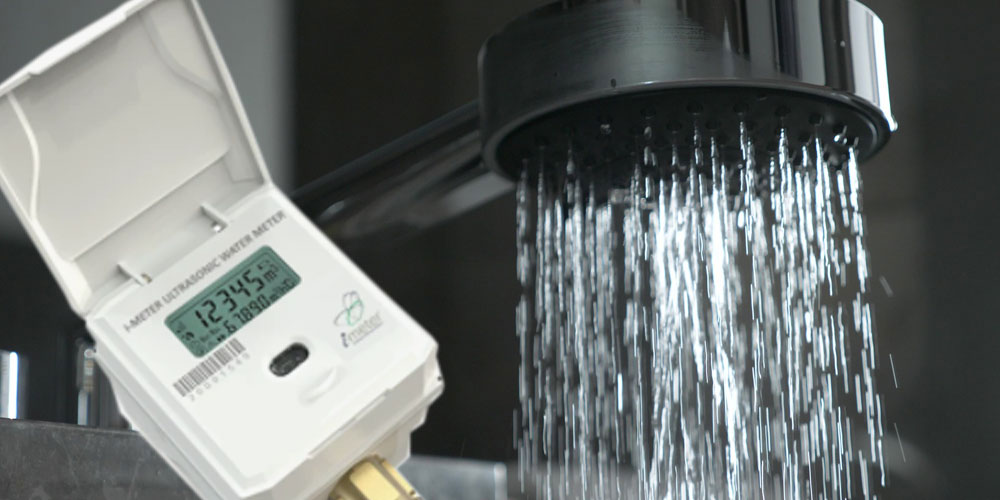Water Metering technology has come a long way! Newer technologies have converged into ultrasonic meters for residential and reclaimed applications. As the name suggests, Ultrasonic Water Meters also known as Ultrasonic Flowmeters use ultrasound to measure the velocity of the fluid to calculate volumetric flow. These powerful technologies have allowed property owners and property managers to efficiently manage resources with accurate information in real-time along with timely and dispute-free billing collection.
Types of Ultrasonic Water Meters
One of the main advantages of these meters is the lack of moving parts that makes them sturdier and extends their life expectancy. Ultrasonic water/flow meters come in basically two different types: Transit-time ultrasonic flow meters and Doppler ultrasonic flow meters. Both meters have different uses, as the first type is commonly used with in-lime meters and the second one in wrap-around or nonintrusive meters.
Transit-time ultrasonic flow meters use two transducers - one upstream and one downstream of a calibrated sleeve. The transducers are both ultrasonic transmitters and receivers. Both function and operate alternatively using a signal, like frequency modulated bursts of sound energy that flow through the fluid between the two transducers. If there is no flow and the meter is empty, there would be no reading. If the fluid is static-there is no flow- the travel time of the signal would be the colloquial time or the base, and if the fluid moves fast the signal would travel faster, indicating then a high flow.
The meter then measures the time difference between both transducers. Because the sleeve is calibrated to a determined diameter, the calculator of the meter then uses the time difference and multiplies it by the volume of the calibrated sleeve to determine the amount of fluid that has crossed from the upstream to the downstream sensor.
Because of the need for the signal to travel, it is imperative that the fluid be clean, free of debris and air bubbles to ensure accuracy, that is why these types of meters are used for domestic hot or cold water and for thermal energy metering on water circuits used in heating or cooling applications.
Doppler ultrasonic flow meters are used to measure liquids that may contain debris, bubbles, or gases with particles that have sound-reflecting particles, as well as other mixtures of fluids that have a density that is less than that of water.
This type of meter uses the Doppler effect of a signal generated by one transducer, located upstream, and the reflection captured by the other transducer located downstream on the same pipe, then the time difference is used to multiply the volume between the two sensors times the internal pipe diameter.
Another way of imagining how the doppler effect works is by hearing the sound of an ice cream truck. The closer the vehicle is, the louder the sound. As the truck turns the corner, the sound decreases. That decrease is relative to the position of the ice-cream truck relative to the listener and is known as a Doppler effect, discovered by Christian Doppler.
Because, as the name indicates, the doppler effect has to reflect on particles suspended in the fluid, without these particles the reflection would come from the pipe walls and there would be no relative movement measured.
Ultrasonic Water Meter Applications
Transit time ultrasonic flow meters are highly accurate, particularly in the low flow range, when compared to other mechanical water meters, and are a cost-effective method in measuring water. They also have the additional advantage that they can be installed in any position, not necessarily horizontally, ideal for retrofits when space is not available.
Doppler ultrasonic flowmeters, use wrap-around sensors that are installed outside the pipe, which makes the installation non-intrusive, simple, and inexpensive. They are primarily used in paper plants, mining industries, sewage, and sludge applications where there are many solids in the process.
The Doppler Effect ultrasonic meter does not have high accuracy when used on pipes that transport clean liquids, but it can give a good approximation to the consumption in particular on large pipe diameters.


